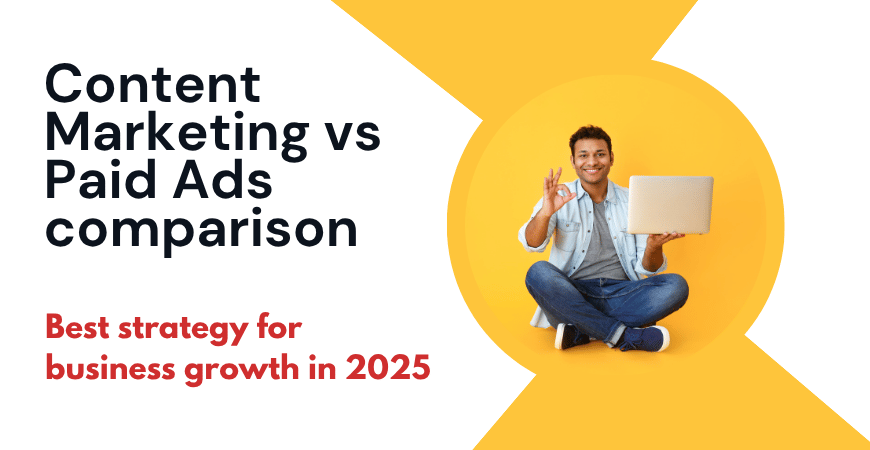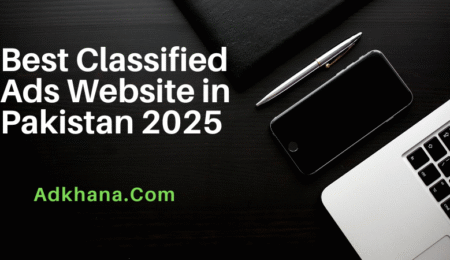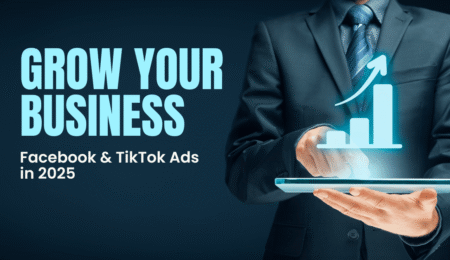Content Marketing vs Paid Ads – Best Choice in 2025
Content Marketing vs Paid Ads: Which Delivers Better ROI?
In the ever-evolving digital landscape, businesses face a crucial dilemma: should they invest more in content marketing or paid advertising? Both strategies offer unique advantages, but the decision depends on goals, resources, and long-term vision. Understanding the strengths, weaknesses, and best use cases of each can help you make the right choice for sustainable growth.
Understanding Content Marketing
Content marketing refers to creating and distributing valuable, relevant, and consistent content to attract and retain a target audience. Instead of directly promoting a product, content marketing focuses on building trust, authority, and long-term relationships.
Forms of content marketing include:
-
Blog posts and articles
-
Social media content
-
E-books and whitepapers
-
Podcasts and webinars
-
Videos and tutorials
The primary goal is to educate, engage, and nurture leads until they are ready to make a purchase.
Understanding Paid Advertising
Paid advertising, on the other hand, involves spending money to promote products or services through platforms such as Google Ads, Facebook Ads, Instagram promotions, or LinkedIn campaigns. Paid ads are highly targeted and designed to produce immediate visibility, traffic, and conversions.
Common types of paid ads include:
-
Pay-per-click (PPC) campaigns
-
Display advertising (banners, pop-ups)
-
Social media ads
-
Video ads
-
Influencer promotions (sponsored posts)
Paid advertising’s strength lies in its ability to generate instant results, making it a popular choice for businesses that want fast growth or have time-sensitive campaigns.
Benefits of Content Marketing
-
Long-Term ROI
Content created once—like a blog post or video—can generate traffic and leads for years. It continues to provide value without additional costs. -
Trust and Authority Building
By consistently publishing helpful content, businesses position themselves as thought leaders, fostering trust with their audience. -
SEO Advantages
High-quality content improves search rankings, helping brands attract organic traffic without relying on ad spend. -
Customer Relationships
Content nurtures leads over time, ensuring customers feel informed and valued rather than pressured. -
Cost-Effective in the Long Run
While content creation requires effort, it generally costs less than continuous ad spending.
Drawbacks of Content Marketing
-
Takes Time
Building authority, ranking in search engines, and gaining audience trust can take months or even years. -
Resource-Intensive
Quality content demands skilled writers, designers, and strategists. Small businesses may struggle with bandwidth. -
Uncertain Virality
Not all content performs well; results can be unpredictable without a strong distribution strategy.
Benefits of Paid Advertising
-
Immediate Results
Ads can drive traffic, leads, and sales the same day they’re launched. -
Precise Targeting
Platforms allow businesses to target specific demographics, interests, and behaviors, maximizing efficiency. -
Scalability
Businesses can quickly increase reach by boosting ad budgets when they see positive ROI. -
Measurable Performance
Ads provide detailed analytics—impressions, clicks, conversions—making it easier to optimize campaigns. -
Supports Product Launches
For new businesses or product launches, ads create instant visibility that organic content cannot match immediately.
Drawbacks of Paid Advertising
-
High Costs
Competitive industries like finance, healthcare, or e-commerce often face skyrocketing ad costs. -
Short-Lived Impact
Once the budget stops, traffic and leads disappear. Paid ads don’t build long-term value. -
Ad Fatigue
Audiences quickly tire of seeing the same ads, reducing effectiveness over time. -
Dependency Risk
Relying too heavily on ads makes businesses vulnerable to rising costs and platform policy changes.
Comparing Content Marketing and Paid Ads
| Factor | Content Marketing | Paid Ads |
|---|---|---|
| Speed of Results | Slow (months/years) | Fast (hours/days) |
| Cost | Lower long-term cost | Higher ongoing expense |
| Trust & Credibility | High (earned through value) | Lower (perceived as promotional) |
| Longevity | Long-lasting | Short-term |
| Scalability | Limited by content creation speed | Easy with budget increases |
| Best For | Brand building, long-term leads | Quick sales, product launches |
Which is Best?
The truth is: neither strategy alone is universally the best. The choice depends on your goals:
-
For startups or new product launches: Paid ads are ideal because they deliver instant visibility and customers when you need traction fast.
-
For long-term brand growth: Content marketing is more sustainable, creating evergreen value and trust that compounds over time.
-
For businesses in competitive industries: A hybrid approach works best—using paid ads for immediate reach and content marketing to nurture leads and reduce dependency on ads.
Integrating Content Marketing with Paid Ads
The most successful brands don’t treat content marketing and paid ads as rivals—they combine them for maximum impact. Here’s how:
-
Promote Content with Paid Ads
Use ads to amplify blog posts, videos, or case studies. This builds awareness while simultaneously growing organic reach. -
Retargeting Campaigns
Run ads targeting users who engaged with your content but didn’t convert. This keeps your brand top of mind. -
Leverage Data from Ads for Content
Paid ad analytics reveal audience preferences, which can guide future content topics. -
Use Content to Lower Ad Costs
High-quality content (landing pages, articles) improves ad relevance scores, reducing cost-per-click. -
Nurture Leads Beyond Ads
Once a customer clicks an ad, direct them to valuable content (like email newsletters or guides) to build long-term loyalty.For paid advertising authority visit Google Ads
Final Thoughts
So, content marketing vs paid ads – which is best?
If you want immediate visibility and quick conversions, paid advertising is your go-to. But if you aim for sustainable growth, brand authority, and long-term ROI, content marketing is the wiser investment.
The smartest approach for most businesses is a balanced strategy:
-
Use paid ads for short-term growth and precise targeting.
-
Invest in content marketing to build a lasting foundation of trust and organic reach.
When both strategies work hand in hand, businesses not only achieve instant results but also secure a sustainable future, ensuring growth that is both fast and enduring.
Read Also: How Small Businesses Can Use Facebook & TikTok Ads in 2025



